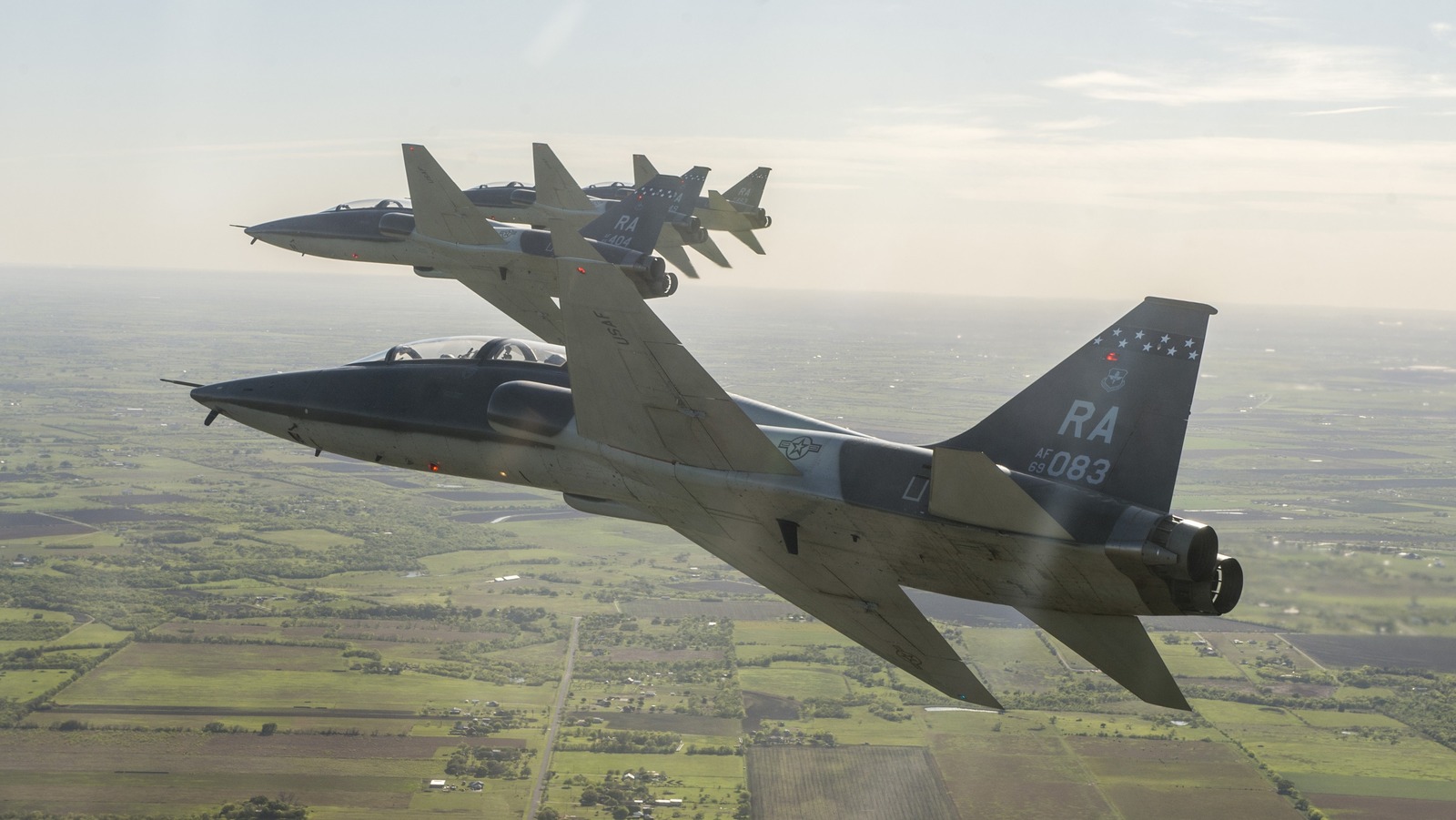
The T-38 Talon has 2 General Electric J85-GE-5 turbojet engines that incorporate afterburners. With a robust 2,050 pounds of dry thrust, the engines alone provide a significant output of performance power. So, what is the purpose of the afterburners, then? Afterburners temporarily boost the amount of thrust available and enhance a jet’s capabilities. For example, while the T-38 Talon’s engines produce 2,050 pounds of dry thrust (no afterburner), once the afterburners kick in, it jumps to 2,900 pounds, an increase of 850 pounds of thrust.
An afterburner is a system that, when engaged, sends additional jet fuel into the mix, creating a more dramatic reaction between the fuel and available oxygen. To break it down into simple steps: first, a jet engine swallows air; this air becomes tightly compacted and then combined with jet fuel and ignited. The reaction of the burning fuel powers the turbine and sends a massive amount of energy out of the rear of the engine, creating motion. This process results in leftover oxygen that the afterburner can take advantage of, increasing overall kinetic energy output. Sometimes, this boost of thrust and the resulting speed can put pilots in unfortunate situations, such as the time a U.S. fighter jet shot itself out of the sky by colliding with its own flying bullets.

